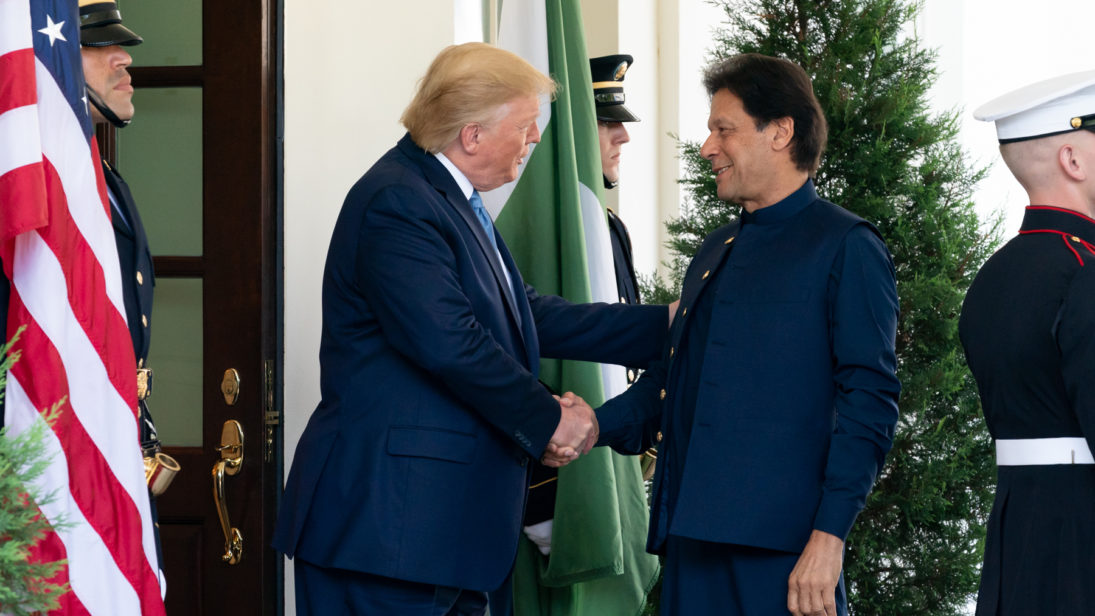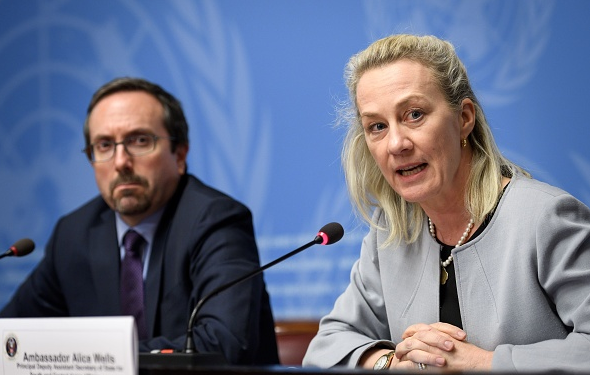
Prime Minister Imran Khan’s first official visit to the United States late last month has generated hopes for yet another “reset” in U.S.-Pak relations. It was marked by multiple engagements between senior political and military leaders of Pakistan and the United States discussing wide-ranging issues such as the Afghan peace process, counterterrorism, trade, and military assistance. The presence of Pakistan Army Chief Qamar Javed Bajwa and newly-appointed Director General of the Inter-Services Intelligence (ISI) Faiz Hameed in the delegation underlined the security significance of the visit. Especially after the recent downturn in U.S.-Pak ties, this visit held great symbolic value for Pakistan, and offered both sides an opportunity to present their positions in order to move past their problems and foster a better working relationship. To that end, it was a highly successful visit and both sides seemed happy with the outcome. However, on a substantive level, whether the visit had a positive impact on the future trajectory of the relationship will be determined by the two countries’ willingness and ability to deal with potential challenges ahead.
Overall, the visit was a departure from the coldness between Pakistan and the United States over the last decade or so and showed signs of an improvement in the relationship. It has already resulted in the approval of USD $125 million in military sales to support the United States’ F-16 fighter jets in Pakistan. It could potentially lead to the resumption of U.S. military aid to Pakistan that President Trump cancelled in 2018, though the Pentagon has stated that there’s no change in the U.S. position at this time. Prime Minister Imran Khan had a positive meeting with President Donald Trump, and unlike their Twitter faceoff last year, Trump was all praises for the new Pakistani government in this interaction and hopeful for the full restoration of the relationship between the two countries.
Although omitted from the White House statement preceding the visit, the primary focus was on the Afghan peace process and how Pakistan can support the United States’ exit from the long-drawn Afghan war. There was a rare recognition of Pakistani efforts in Afghanistan by President Trump. Emphasizing the importance of a political solution in Afghanistan, Prime Minister Khan assured a breakthrough on the release of two hostages, an American and an Australian of the American University of Kabul, from Taliban custody. And while the discussions remained largely focused on positive developments and forward movement, both sides also shared their past misgivings and mutual grievances very candidly.
The very fact that Kashmir stole the limelight and was highlighted as the primary cause of tension between the two nuclear neighbors was a diplomatic win for Pakistan.
To everyone’s surprise, the Kashmir issue received unprecedented attention from President Trump, which was a bonus for Pakistan. President Trump’s offer to mediate the Kashmir dispute between India and Pakistan as allegedly requested by Indian Prime Minister Narendra Modi stirred up a tweetstorm. As expected, the statement was immediately refuted by the Indian Ministry of External Affairs as well as walked back by U.S. Assistant Secretary of State for South and Central Asia (Acting) Alice Wells. However, the very fact that Kashmir stole the limelight and was yet again highlighted as the primary cause of tension between the two nuclear neighbors was a diplomatic win for Pakistan.

While the mediation comment has been labeled as a usual faux pas by Trump and dismissed as an off-the-cuff remark by analysts, that was not all he said on India-Pakistan relations. Interestingly, speaking to the press before his meeting with Khan, Trump said that India was going to be a big part of their discussions and later, on being questioned about alleged Indian attempts to destabilize Pakistan and whether the United States can play a role in stopping that, President Trump emphasized that he believes it is “a two-way street” with both countries blaming each other for such attempts. These references added weight to the Pakistani position on the importance of initiating dialogue with India and brought the spotlight back on Indian resistance to talks. The overall treatment of the India-Pakistan relationship by President Trump was more in Pakistan’s favor as it was a break from previous U.S. policy of disapprobation of Islamabad on terrorism issues and instead focused on what both India and Pakistan could do to resolve their issues.
The tour has indeed raised Prime Minister Khan’s profile in Washington and provided him some much-needed insulation from criticism on Pakistan’s domestic political challenges. However, declaring the visit a “reset” in the U.S.-Pak relationship at this nascent stage poses the risk of losing sight of associated challenges that may arise in the future. What made this visit possible was the two sides’ convergence of interests on short-term objectives in Afghanistan i.e. the United States’ withdrawal from Afghanistan. This trip was used as an opportunity to formalize that alignment, with added responsibilities for Pakistan. But a reset in the relationship would largely depend on how Pakistan delivers on this short-term objective and balances its position vis-à-vis long-term U.S. objectives in the region, which includes countering China.
Historically, U.S.-Pak relations have remained transactional in nature and oscillated between being good and bad at different times. Unfortunately, the transitions have been quick and most of the time came without warning. This time also, the quick transition from relations nosediving just a year go to positive movement today is primarily due to U.S. desperation to get out of the Afghan quagmire. Notwithstanding the progress on the Afghan peace process in the past few months, where the Taliban have agreed to the primary U.S. demand to guarantee that Afghan soil will not be used by terrorists such as Al-Qaida, the future of Afghanistan depends on a number of other independent variables such as the nature of the relationship between various Afghan factions and the Taliban after U.S. withdrawal, growing threat of the Islamic State, proxy wars by regional stakeholders, and the risk of another civil war in the country. Pakistan has used its leverage in bringing the Taliban to the negotiation table; however, its ability to sustain that process and create a path for a peaceful future in view of the above-mentioned threats is limited. The current arrangement may provide a face-saving exit to the United States but the risk of an unsettling future in Afghanistan is real where Pakistan being the neighboring state may be left to bear the brunt as well as the undue responsibility.
It is naive to expect that Islamabad would get any favors from Washington at the cost of Indian disapproval.
In addition, Pakistan stands at the periphery of long-term U.S. objectives in the region whereas India is the primary strategic partner in its Indo-Pacific strategy. It is naive to expect that Islamabad would get any favors from Washington at the cost of Indian disapproval. In addition, growing U.S. anxiety about the rise of China has complicated the regional scenario and has changed U.S.-China relations from competitive to adversarial. So much so that the Chinese involvement in the recent Pulwama/Balakot crisis between India and Pakistan is viewed with concern by U.S. officials. Washington’s perception is that Beijing played an escalatory role, advertently or inadvertently, during the peak of the crisis. This is unlike previous crises where China’s involvement was generally viewed as complementary to U.S. deescalation efforts.1 With this backdrop, Pakistan’s close alignment with China, consolidated through the China-Pakistan Economic Corridor (CPEC), on the one hand and the Indo-U.S. strategic partnership to counter China on the other has put strains on any possibility of long-term U.S.-Pak convergences.
Any future terms of engagement between Pakistan and the United States would be affected by these challenges and risks.
***
Click here to read his article in Urdu.
Image 1: The White House via Wikimedia
Image 2: AFP via Getty


